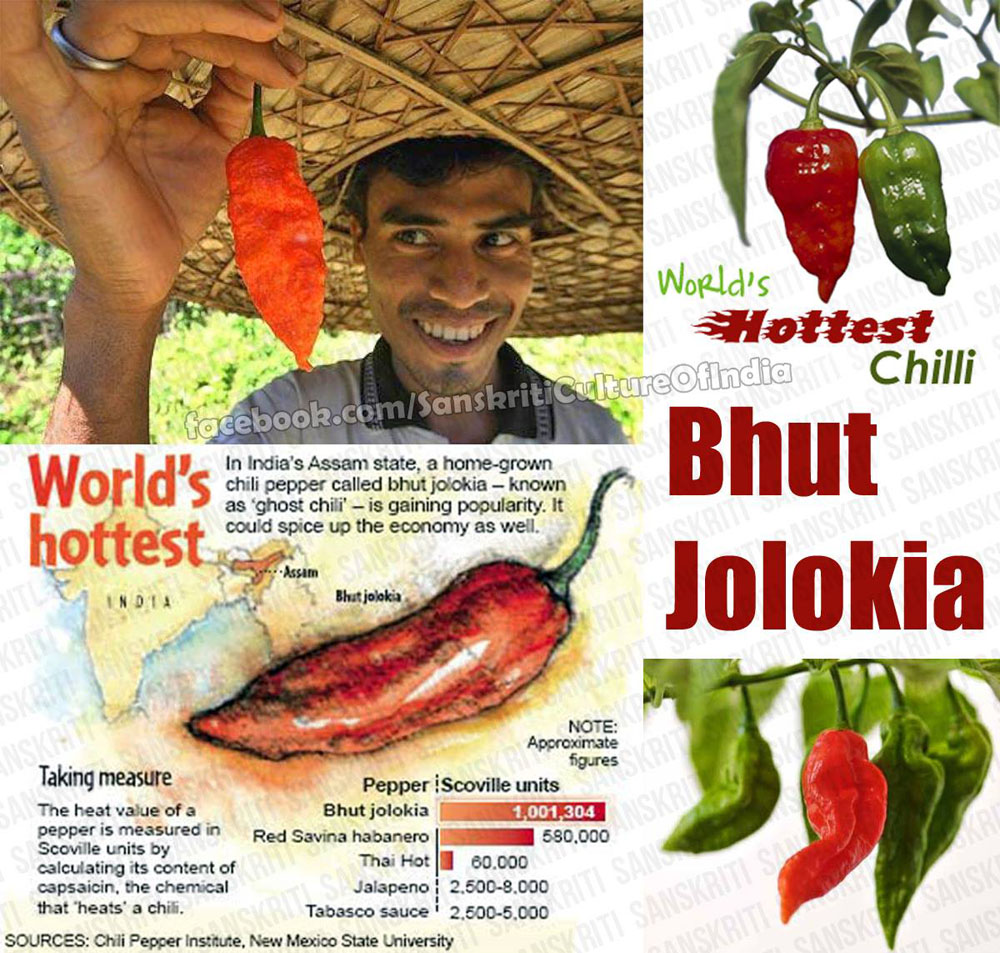The name Naga Jolokia means in English (King Cobra Chili) due to the extreme heat of the Chili being compared to the deadly poison in the venomous snake, Bhut translated into English is ghost and is probably used as a name to its ghostly bite.
In 2000, India’s Defence Research Laboratory (DRL) reported a rating of 855,000 units on the Scoville scale, and in 2004 a rating of 1,041,427 units was made using HPLC analysis.
One seed from a Bhut Jolokia (Hottest Chilli in the World) can sustain intense pain sensations in the mouth for up to 30 minutes before subsiding. Ripe Bhuts measure 60 mm (2.4 in) to 85 mm (3.3 in) long and 25 mm (1.0 in) to 30 mm (1.2 in) wide with an orange or red color.
The pepper is used as a cure for stomach ailments. It is also used as a spice as well as a remedy to summer heat, presumably by inducing perspiration in the consumer. In northeastern India, the peppers are smeared on fences or incorporated in smoke bombs as a safety precaution to keep wild elephants at a distance.
In 2009, scientists at India’s Defence Research and Development Organisation announced plans to use the chillies in hand grenades, as a less lethal way to control rioters.
However, current hottest chilli is the Trinidad Scorpion “Butch T” which was grown by The Chilli Factory (Australia) and rated at 1,463,700 Scoville Heat Units (SHU) according to tests conducted by EML Consulting Services in Morisset, New South Wales, Australia, on 1 March 2011. The chilli is of the Capsicum genus and a hybrid of the Chinese and frutescens species.











